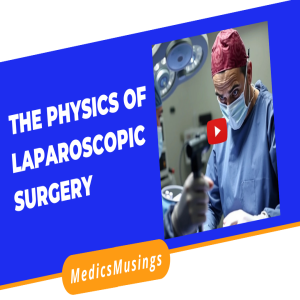
Tuesday Feb 25, 2025
Standing on the Shoulders of Physicists in the Operating Room
The Physics of Laparoscopic Surgery: Key Points
Overview
This humorous dissertation written and read by Leo A. Gordon, MD presents ten "laws of physics" that humorously explain the frustrations and challenges of laparoscopic surgery, attributing them to famous physicists who never actually created these principles.
Key Points
-
Heisenberg's Principle of Indeterminacy: The location of the radiology technician at the time of cholangiography is indeterminate.
-
Thomson's Principle of Negatively Charged Particles: The passage of an x-ray through an empty cassette generates no data.
-
Schrodinger's Theory of Wave Mechanics: A clamped irrigation system will not allow irrigation fluid to flow.
-
Descartes's Vortex Theory: All cables and tubing become intertwined despite logical arrangement.
-
Bradley's Aberration of Light Theory: A laparoscopic light source is ineffective if not plugged in.
-
Boltzman's Theory of Entropy and Probability: The preceding case will be 20% longer than scheduled, represented by the formula C = P + (T + .2T) + L.
-
Lavoisier's Law of Gas Insufflation: The rate of insufflation is inversely proportional to the number of laparoscopic cases following in that room.
-
Bunsen's Law of Reciprocity: If you tie your assistant up on a lengthy laparoscopic case, they will do the same to you at the most inconvenient time.
-
Cavendish's Law of Condensation: Despite all preventive measures, the laparoscope lens will be obscured by condensation.
-
Einstein's Theory of Laparoscopic Relativity: Motion, space, and time cease to exist after the second hour of any laparoscopic case.
The piece is a satirical take on the everyday frustrations of laparoscopic surgery, cleverly disguised as scientific principles attributed to famous physicists.
No comments yet. Be the first to say something!